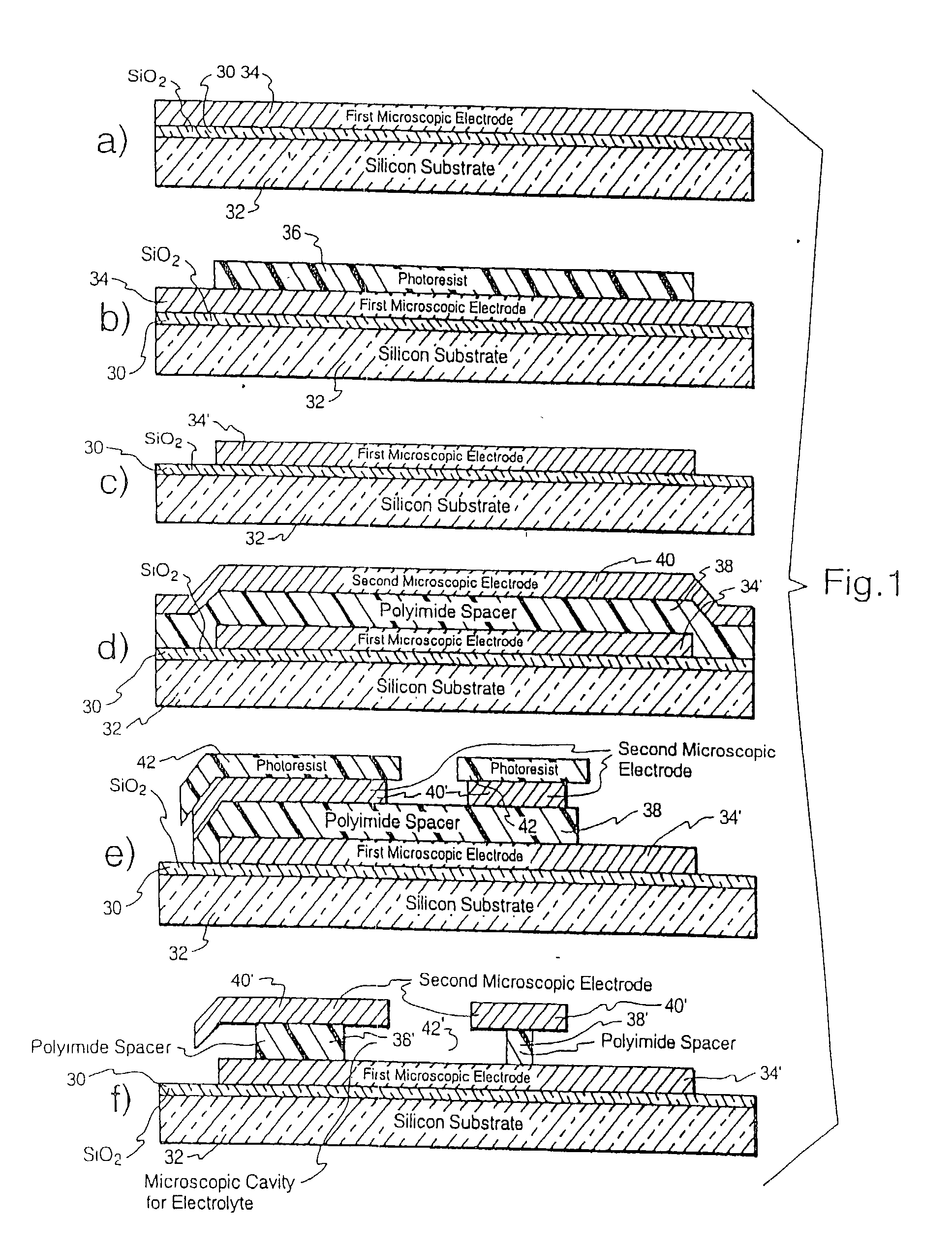Microscopic batteries for MEMS systems
- Summary
- Abstract
- Description
- Claims
- Application Information
AI Technical Summary
Benefits of technology
Problems solved by technology
Method used
Image
Examples
example ii
[0175] Fabrication of a Metal-Hydride / Nickel Hydroxide Microscopic Battery with Liquid Electrolyte
[0176] A microbattery was constructed, essentially as in Example I, except that the anode comprised a metal hydride instead of zinc metal. For the metal-hydride anode electrodes, a two component hydride of lanthanum / nickel alloy was used. This electrode was constructed in the discharged state (i.e., not loaded with hydrogen). Thin films of La--Ni were formed by evaporating from a La--Ni melt. The composition and temperature of the La--Ni melt was carefully controlled. Also, the metal was alloyed after deposition to ensure that the hydride had the best structure for hydrogen insertion.
example iii
[0177] Fabrication of Zinc / Nickel Hydroxide Microscopic Battery with Liquid Electrolyte in Porous Spacer
[0178] A zinc / nickel hydroxide microbattery was constructed. The cathode is formed essentially as in Example I by forming an oxide layer and thereafter a NiOOH cathode. After patterning of the cathode, a layer of porous material for the electrolyte is formed.
example iv
[0179] Fabrication of Solid Electrolyte Microscopic Battery
[0180] Microscopic batteries with a solid-state electrolyte were made. Despite their lower power performance relative to liquid electrolyte batteries, solid electrolyte batteries are attractive for applications which require, for example, batteries to bend or conform to a particular shape, or to operate over a broad range of temperatures.
[0181] Two different solid electrolyte materials were used, i.e. tetramethylammonium hydroxide pentahydrate (TMAOH) and polyethylene oxide / potassium hydroxide (PEO / KOH). TMAOH is a solid electrolyte material used heretofore in a solid-state Ni / MH battery which can provide current densities of 10 mA / cm.sup.2 PEO, widely used in solid state cells, is a polymer to which a salt can be added to produce a finite ionic conductivity.
PUM
| Property | Measurement | Unit |
|---|---|---|
| Weight | aaaaa | aaaaa |
| Dielectric polarization enthalpy | aaaaa | aaaaa |
| Electrical conductivity | aaaaa | aaaaa |
Abstract
Description
Claims
Application Information
 Login to View More
Login to View More - R&D
- Intellectual Property
- Life Sciences
- Materials
- Tech Scout
- Unparalleled Data Quality
- Higher Quality Content
- 60% Fewer Hallucinations
Browse by: Latest US Patents, China's latest patents, Technical Efficacy Thesaurus, Application Domain, Technology Topic, Popular Technical Reports.
© 2025 PatSnap. All rights reserved.Legal|Privacy policy|Modern Slavery Act Transparency Statement|Sitemap|About US| Contact US: help@patsnap.com



